#17th century composers
Explore tagged Tumblr posts
Text
youtube
What shall I do to Show by Henry Purcell (1659–1695). A moving, majestic, graceful, classical composition from the Baroque period arranged and performed on Piano, Flutes and Cello. Please license here for media use: https://audiojungle.net/item/purcell-piano-1/23027770 Also available in 'Piano only' and 'Flutes & Cello only'. Useful for patriotic or religous projects, drone footage, video production, history and documentaries, projects on Royalty, Ceremony, Grand Public Occasion, Period, Costume Dramas, Funerals, War, Sad Occaisons etc. Applicable to the creation of film, television, commercials, documentaries, film trailer cues, history programs, advertising, architecture, impressive buildings etc. For more music for media use visit https://audiojungle.net/user/davidbeardmusicproduction/portfolio
#royalty free music#film#stock music#production music#classical#classical music#music#theatre#podcast#advertising#score#henry purcell#purcell#baroque#baroque music#17th century#audiojungle#composer#piano#Youtube
2 notes
·
View notes
Text
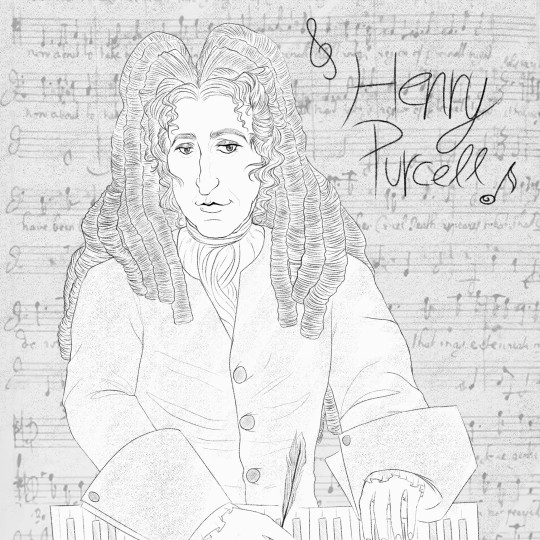
Henry Purcell
Ode to an upcoming H. Purcell harpsichord concert I wrote the concept for.
#baroque#historical#composer#17th century#18th century#georgian#henry purcell#purcell#rococo#baroque music#classical music#music history#history#harpsichord
6 notes
·
View notes
Text
Portrait of 17-century composer Barbara Strozzi, by Bernardo Strozzi.

0 notes
Text
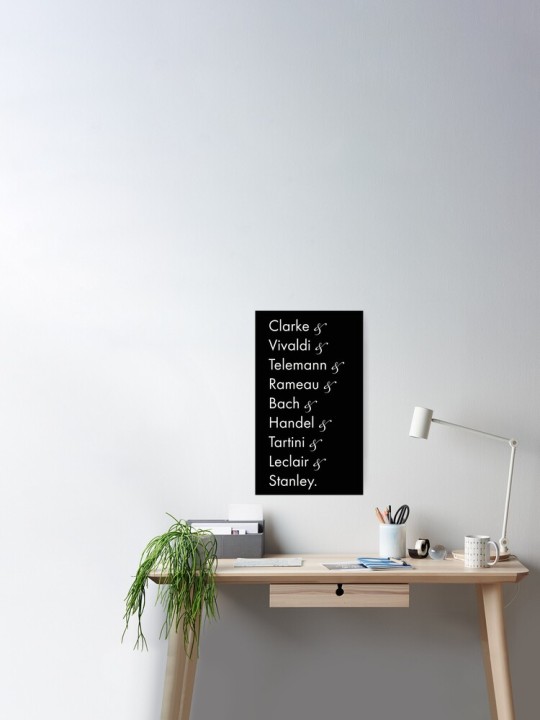



#Baroque#Baroque music#17th century#18th century#Jeremiah Clarke#Vivaldi#Telemann#Rameau#Jean Philippe Rameau#Bach#Handel#Tartini#Leclair#Jean Marie Leclair#John Stanley#composers#classical music#my redbubble designs
1 note
·
View note
Text
Dave Grusin - The Goonies - Fratelli Chase 1985
The Goonies is a 1985 American adventure comedy film directed and co-produced by Richard Donner from a screenplay by Chris Columbus based on a story by Steven Spielberg and starring Sean Astin, Josh Brolin, Corey Feldman, and Ke Huy Quan. In the film, a group of kids who live in the "Goon Docks" neighborhood of Astoria, Oregon, attempt to save their homes from foreclosure to an expanding country club and in doing so they discover an old treasure map that takes them on an adventure to unearth the long-lost fortune of One-Eyed Willy, a legendary 17th-century pirate, while being pursued by the Fratellis, a family of criminals who are after the treasure as well.
The film grossed $125 million worldwide on a budget of $19 million. Critics reviewed the film positively and it has since become a cult film. In 2017, the film was selected for preservation in the US National Film Registry by the Library of Congress as being "culturally, historically, or aesthetically significant". Special anniversary events for the film, hosted by the city of Astoria, have drawn about 10,000 to 15,000 visitors. The home used for the Walsh family has become a tourist attraction, receiving between 1,200 and 1,500 visitors a day during the summer of the 30th anniversary. As a result, in August 2015, the residents and owners of the home, their neighbors, and the city of Astoria took steps to limit public access to the home.
The main theme, "Fratelli Chase", has been used in numerous trailers, such as Innerspace, Scrooged, and Guarding Tess, and was re-recorded by compser Dave Grusin and the London Symphony Orchestra for the album Cinemagic. The score makes liberal use of the Max Steiner-composed theme from Adventures of Don Juan; the character Sloth is seen as an Errol Flynn fan and aspects of his movies are referenced throughout The Goonies as a result. Dave Grusin's score was unavailable for 25 years, until soundtrack label Varèse Sarabande released it on CD in March 2010 for the film's 25th anniversary in a limited edition of 5,000 copies. The company reissued the score soundtrack on CD as a wide release in June 2019, but with the previous CD's four bonus tracks omitted.
87,4% never say die!
youtube
454 notes
·
View notes
Text
100 "Beautiful" Words
for your next poem/story
Accouchement - the time or act of giving birth
Allemande - a dance step with arms interlaced
Anent - about, concerning
Anthophilous - feeding upon or living among flowers
Aphyllous - destitute of foliage leaves
Apophenia - the tendency to perceive a connection between unrelated things
Apoplectic - extremely enraged
Badinage - playful repartee; banter
Belaud - to praise usually to excess
Chromophil - staining readily with dyes
Coeval - of the same or equal age, antiquity, or duration
Cognoscente - a person who has expert knowledge in a subject
Cruciferous - any of a family of plants including the cabbage, turnip, and mustard
Deliquescent - tending to melt or dissolve
Diallelus - a reasoning in a circle
Elide - to leave out of consideration
Emulous - inspired by or deriving from a desire to emulate
Epergne - an often ornate tiered centerpiece consisting typically of a frame of wrought metal (e.g., gold) bearing dishes, vases, or candle holders or a combination of these
Epexegesis - additional explanation or explanatory matter
Fructify - to bear fruit
Funambulism - a show especially of mental agility
Galbulus - a spherical closed fleshy cone of thickened or fleshy peltate scales
Grenadine - an open-weave fabric of various fibers
Haematite - a reddish-brown to black mineral consisting of ferric oxide, constituting an important iron ore, and occurring in crystals
Hyaline - something that is transparent
Ianthine - having a violet color
Impresa - a device with a motto used in the 16th and 17th centuries; emblem
Ineluctable - not to be avoided, changed, or resisted
Indite - to put down in writing
Jacinthe - a moderate orange
Jiqui - a Cuban timber tree with hard wood very resistant to moisture
Kincob - an Indian brocade usually of gold or silver or both
Kvell - to be extraordinarily proud
Labret - an ornament worn in a perforation of the lip
Lachrymator - a tear-producing substance (such as tear gas)
Latericeous - of the color of red brick
Legerity - alert facile quickness of mind or body
Limnology - the scientific study of bodies of fresh water
Logorrhea - excessive and often incoherent talkativeness or wordiness
Maieutic - relating to the Socratic method of eliciting new ideas from another
Maquillage - makeup
Marmoreal - of marble
Matronymic - a name derived from that of the mother or a maternal ancestor
Mazarine - mazarine blue; a deep purplish blue
Mirifical - working wonders
Nacarat - geranium lake (i.e., a vivid red)
Nephology - a branch of meteorology dealing with clouds
Notabilia - things worthy of note
Obnubilate - becloud, obscure
Obstreperous - marked by unruly or aggressive noisiness
Oenology - a science that deals with wine and wine making
Ombrophilous - capable of withstanding or thriving in the presence of much rain
Organdy - a very fine transparent muslin with a stiff finish
Palafitte - an ancient dwelling built on piles over a lake
Pareidolia - the tendency to perceive a specific, often meaningful image in a random or ambiguous visual pattern
Peregrinate - to travel especially on foot
Peristyle - an open space enclosed by a colonnade
Perse - of a dark grayish blue resembling indigo
Personalia - biographical or personal anecdotes or notes
Phylactery - amulet
Piacular - sacrificial, expiatory
Pleonasm - the use of more words than those necessary to denote mere sense; redundancy
Poetomachia - a contest of poets; specifically: a literary quarrel of Elizabethan dramatists
Prasine - having the green color of a leek
Prestidigitation - sleight of hand
Psilanthropy - a doctrine of the merely human existence of Christ
Psychomachy - a conflict of the soul
Quaesitum - something sought for; end
Quatenus - in the quality or capacity of
Rebarbative - repellent, irritating
Rhapsodize - to speak or write in a rhapsodic (i.e., extravagantly emotional) manner
Rheophilous - preferring or living in flowing water
Rupestrian - composed of rock
Salmagundi - a heterogeneous mixture; potpourri
Sanative - having the power to cure or heal
Sciaphilous - thriving in shade
Subitaneous - formed or taking place suddenly or unexpectedly
Tellurian - a dweller on the earth
Tergiversation - evasion of straightforward action or clear-cut statement
Terpsichorean - of or relating to dancing
Threnody - a song of lamentation for the dead
Tilleul - a pale greenish yellow that is very slightly paler than primrose green
Tmesis - separation of parts of a compound word by the intervention of one or more words
Toadstone - a stone or similar object held to have formed in the head or body of a toad and formerly often worn as a charm or antidote to poison
Toxophilite - a person fond of or expert at archery
Transmogrify - to change or alter greatly and often with grotesque or humorous effect
Ubiquitarian - belief that as Christ is omnipresent his body is everywhere (as in the Eucharist)
Urtication - to induce hives
Vicissitudinous - marked by or filled with vicissitudes (i.e., the quality of being changeable)
Videlicet - that is to say; namely
Visitant - visitor; especially: one thought to come from a spirit world
Wallydraigle - a feeble, imperfectly developed, or slovenly creature
Waltherite - a mineral consisting of an ill-defined carbonate of bismuth having green to brownish green doubly terminated prismatic crystals
Xyloid - resembling wood
Xylomancy - divination by means of pieces of wood
Xystus - a long and open portico
Yfere - obsolete: together
Zoism - phenomena of life are due to a peculiar vital principle
Zymology - a science that deals with fermentation
Zymurgy - a branch of applied chemistry that deals with fermentation processes (as in wine making or brewing)
If any of these words make their way into your next poem/story, please tag me, or send me a link. I would love to read them!
More: Lists of Beautiful Words ⚜ Word Lists ⚜ Writing Resources PDFs
#beautiful words#word list#writeblr#langblr#linguistics#spilled ink#writing reference#dark academia#writing inspiration#creative writing#literature#writers on tumblr#poets on tumblr#writing prompt#poetry#light academia#writing ideas#writing resources
356 notes
·
View notes
Text

It was another frosty morning, with a brisk northerly wind, and although the clouds swept over the sky at fairly frequent intervals, sometimes dropping a light dusting of tiny particles of snow and ice as they passed, there were some beautifully bright moments in between, which lit up the landscape for a short time.
Algy found himself a soft perch and gazed out at the long, dark shadows stretching all the way across the neighbouring croft. They seemed to be pointing at the illuminated snow-capped mountains of the Isle of Rum in the distance, and the enchanting view reminded him of some lines in a beautiful old song – a VERY old song – and he hummed quietly to himself "Look how the snowy mountains, Heaven’s sun doth gently waste".
Algy reflected that although the northern winter could certainly be beautiful to look at, it was also harsh, especially for the elderly and infirm, and he knew that some of his friends were mourning the loss of dear relatives and friends, for there are many who pass when temperatures fall and the sun sinks low in the sky.
So Algy dedicates this post and this beautiful early English Air especially to those friends who have lost loved ones and are thinking of them now:
Weep you no more, sad fountains; What need you flow so fast? Look how the snowy mountains Heaven’s sun doth gently waste. But my sun’s heavenly eyes View not your weeping, That now lie sleeping Softly, now softly lies Sleeping. Sleep is a reconciling, A rest that peace begets. Doth not the sun rise smiling When fair at even he sets? Rest you then, rest, sad eyes, Melt not in weeping While she lies sleeping Softly, now softly lies Sleeping.
[Algy is singing Weep you no more, sad fountains from The Third and Last Booke of Songs or Aires. Composed to sing to the Lute by the late 16th/early 17th century English composer and lutenist John Dowland.]
And for those who enjoy early music and would like to hear this beautiful song in a roughly authentic version, here is a lovely performance by Paul Agnew and Christopher Wilson:
youtube
#Algy#photographers on tumblr#Scotland#landscape photography#Scottish Highlands#Scottish landscape#bereavement#weep no more#weep you no more sad fountains#john dowland#loss#grief#consolation#winter#Isle of Rum#writers on tumblr#the small isles#elizabethan music#lute#paul agnew#christopher wilson#winter landscape#snow capped mountains#fluffy bird#storybook land#whimsy#original character#original content#adventures of algy#jenny chapman
103 notes
·
View notes
Text
109 years ago today, leo frank, an innocent american jewish man, was lynched.
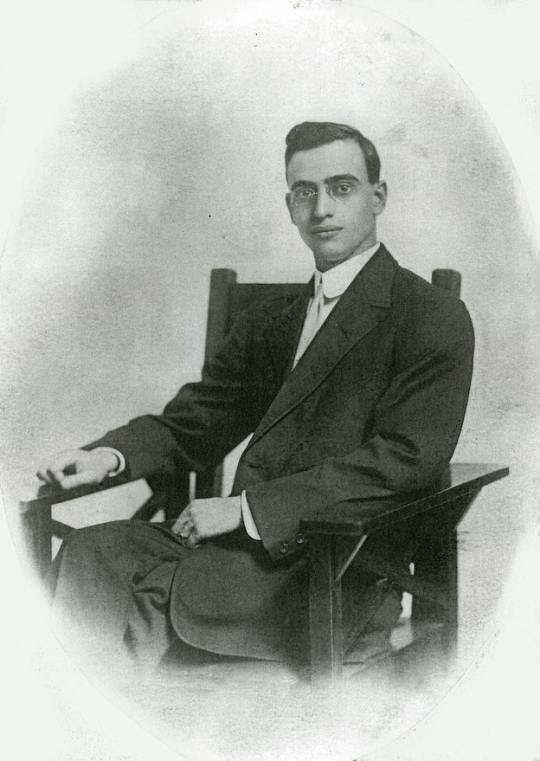
in 1913, leo frank was arrested for the murder of mary phagan. despite evidence that he was at home at the time of the murder, the jury decided in just four hours that he was guilty and the judge sentenced him to death. all of frank's appeals were rejected. protests erupted outside the governor's mansion when the governor decided to commute frank's sentence from death to life imprisonment, and on august 17th, 1915, a group of 25 men kidnapped frank from the prison hospital where he was recovering from an attempt on his life, drove him 100 miles to mary phagan's hometown, and lynched him. there are several photos of the lynching.
though frank is the only known jewish victim of lynching in america, antisemitism was baked into the nation's history in numerous other ways. during the trial, the prosecuting attorney framed him as a sexual pervert who was both a homosexual and preyed on young girls. this is not the first time a jewish man has been framed as a sexual predatory because of his jewishness. it was simply the culmination of centuries of antisemitism that still persists to this day. (content warning for antisemitic caricatures and one graphic photo of the lynching of leo frank)
leo frank was proven innocent after his death, though many people still insist he was guilty, particularly white supremacists.
a musical called parade about the trial and tragic death of leo frank was written by jewish composer jason robert brown and jewish playwright alfred uhry. it premiered in 1988 and was revived in 2023 on broadway, starring jewish actors ben platt and micaela diamond, where neo nazis protested outside the theatre, claiming the show was "glorifying a pedophile."
as of writing this, tomorrow is the first day of elul, the last month in the jewish calendar culminating in the high holy days, the holiest days of the jewish year. every year, synagogues see an increase in negative attention and antisemitism from their wider communities. we start to receive more hostile phone calls and emails, threats of violence, and this year there was a swatting campaign targeting at least 26 jewish institutions. we are supposed to be using this time to reflect and make amends with the people we've hurt, and instead so much of our time and energy had to go toward ensuring we can even safely walk into our communal spaces.
i don't have the answer for how to fix this or what you as a gentile should do. antisemitism is thousands of years old, and it's not going to stop because some well meaning people on tumblr read all the articles linked in this post. all i know is that jews all over the world are terrified and so, so tired.
1K notes
·
View notes
Text
"And his hand in the hand of Láeg mac Ríangabra..."
My previous posts about the variants of Oidheadh Con Culainn were getting very long with all the reblogs and ramblings, so I thought I would do a summary.
Last week, I was idly paging through NLI MS G113 to check the terminology it uses for Láeg. This manuscript was written in 1703, in Co. Cork, by poet Uilliam mac Cartáin. I discovered that in this version of the text, Cú Chulainn dies "with his back against the standing stone and his hand in the hand of Láeg mac Ríangabra".

Although Láeg is usually present in this scene, I had never seen this particular detail before, and being the #1 fan of Láeg mac Ríangabra, I was obviously extremely intrigued and emotional. (Code for: I cried and then I screamed about it to everyone I knew.)
Not only this, but after Cú Chulainn's death, Láeg went back to kiss Cú Chulainn's body, hold him, and grieve for him, which is something he isn't given the opportunity to do in any of the versions that I knew. Wow.
Yesterday, I decided to check for other digitised manuscripts of this text, and I found RIA MS 23 M 25, a slightly earlier manuscript written probably in Co. Cork in the late 17th century -- probably 1684 for this section. To my amazement, it also contained this line:

Further investigation found it in two more Cork manuscripts -- a late 18th century one (RIA 23 G 21) and a 19th century one (Newman College O'Donnell II), both by scribes of the Ó Longáin family. The 18th century one isn't digitised, but I was able to read a transcription of it produced by Julia Kühns in her 2009 PhD thesis; the 19th century one is now held in Newman College in Melbourne, Australia, and looks like this:
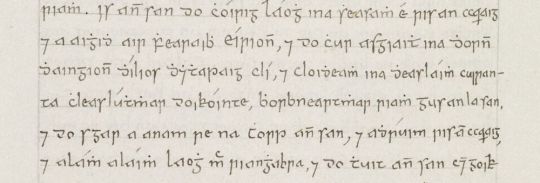
All four of these manuscripts contain the detail that Cú Chulainn died with his back against the standing stone and his hand in the hand of Láeg mac Ríangabra.
All four of these manuscripts were written in Co. Cork, though chronologically they're quite dispersed.
There are two more manuscripts that Kühns groups alongside these in her study, one which has a strong Cork connection and one which doesn't. These aren't digitised and she didn't transcribe this passage, so I can't be certain it's there (her grouping is based on other elements, and she doesn't discuss this detail), but I would imagine it must be. I hope to go to TCD at some point and view them.
On the basis of the evidence I've got, though, it seems to me that this was a Cork variant of the story. The wording of this line is identical -- if they're not all copying from each other (and there are some other variations that might suggest they're not), they're definitely copying from a shared source. What that source was and how far it predates the 1684 manuscript, I don't know yet.
But so far, only G113 contains the scene where Láeg grieves and says goodbye to Cú Chulainn. Given that this MS was written by a known poet who wrote a lot of laments and emotional works, it may be that he added this to heighten the emotional experience. To my admittedly inexpert eye, it shows some strong signs of Munster Irish, which lends credence to the idea that it was locally composed, and since it's not in the other MSS, there's no reason yet to think it's not Uilliam's addition for the sake of feelings. In which case, it worked. Thanks, Liam, you made me cry 221 years later.

And now you're caught up!
#oidheadh con culainn#laegblogging#finn is not doing a phd#i need a better tag now i know it's not just g113#ulster cycle#cu chulainn#laeg mac riangabra#medieval irish#early modern irish#irish mythology#the cork occ
92 notes
·
View notes
Photo
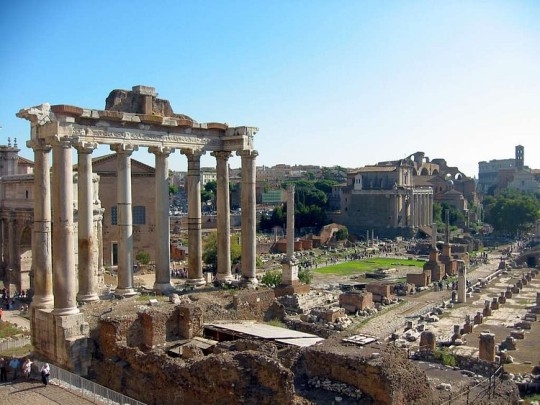
Temple of Saturn, Rome
The 4th century CE Temple of Saturn is situated in the north west corner of the Roman Forum of Rome and has eight majestic columns still standing. Built in honour of Saturn it was the focal point of this ancient cult and stood on the site of the original temple dedicated in c. 497 BCE, which itself had replaced the god's first shrine, the Ara Saturni. In addition, during the Republic the temple also housed the public treasury (aerarium), a function it kept, albeit in a more limited function, in the Imperial period.
Saturn is something of a mysterious figure in Roman religion. Depictions of the god in surviving art have him wearing a veil and brandishing either a sickle or a pruning knife. Perhaps a version of the Greek god Kronos, he was especially worshipped in the Saturnalia festival held every 17th of December (from at least the 5th century BCE) and which lasted several days. This was a festive occasion when people gave gifts to one another, slaves had the freedoms enjoyed by ordinary citizens, more informal clothes were worn instead of the usual toga, and there was a general round of partying and merrymaking which made it the jolliest Roman festival in the calendar; a fact which led Catullus to describe it as 'the best of times'. In later centuries the festival would metamorphose into the Brumalia festival and the similarity of its features and timing - pushed later into December in subsequent centuries - suggest an influence on the Christmas celebration.
The surviving ruins of the temple stand on a pediment of travertine blocks and are themselves composed of pieces recycled from earlier temples. The columns are of the Ionic order and eight still remain on the northern facade. The shafts of the columns are made from Egyptian granite, the two on the side from pink Aswan and the six facade ones from grey Mons Claudianus. Indicative of their differing history, three are monoliths and the others are composed of two pieces fitted together. The Ionic capitals are, in fact, the only parts made specifically for the temple and are from Thasian marble and carved in typical Late Antique style. The architrave carries an Ionic frieze of acanthus leaves and palmettes and came from the previous temple on the site, commissioned by one of Julius Caesar's generals, Lucius Munatius Plancus, in 43 BCE using spoils from the campaigns in Syria.
Within the temple once stood a cult statue of Saturn which became the centre of attention during the Saturnalia when his feet were symbolically freed from the woollen bonds that tied him up for the rest of the year. This act has led to Saturn being associated with liberation, certainly a feature of the Saturnalia festival. The inscription on the exterior of the architrave relates to the reconstruction carried out in the 360s and 370s CE and reads as follows:
SENATVS POPVLVSQVE ROMANVS INCENDIO CONSVMPTVM RESTITVIT
(The Senate and People of Rome, restored following destruction by fire).
Continue reading...
57 notes
·
View notes
Text
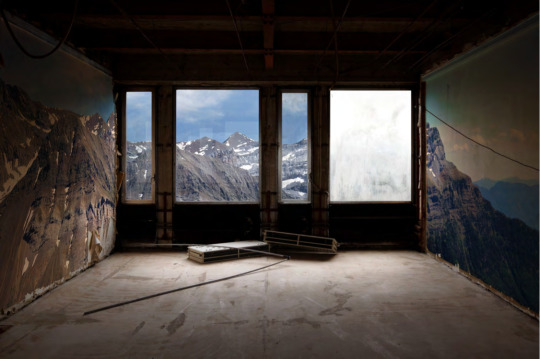
Excerpt from Xavier Delory's ‘open space’ series
Brussels-based conceptual photographer and visual artist xavier delory curates ‘open space,’ a series of new perspectives from within a decaying modernist tower. The work sees a reversal of the classic relationship between the ruin and the natural landscape, as seen in flemish landscape painting from the 17th century, where the two exist harmoniously. with the series, the artist references the ‘composed veduta’ by painters from the north which depict ruins of ancient rome surrounded by an arcadian landscape. unlike this style, xavier delory in his series of architectural photography proposes a condition where the landscape no longer welcomes the ruin, but becomes a part of the ruin.
While xavier delory introduces the natural context freely into this brutalist setting, ‘open space’ plays with the relationship between nature, materials, and landscapes. The artist suggests a visual continuity between the building’s derelict interior and the distant ridge line which it frames. with this strategy, the work references methods of early modernism which strive for a spatial continuity between an interior with its surroundings, putting man back at the heart of ‘creation.’
#xavier delory#open space#architectural photography#ruin / nature representation#brutalism#modernism#modernist#sublime#ruin
21 notes
·
View notes
Text
IWTV S3 - "Long Face" song lyrics (Lestat wants his wife back!)



This Count Dracula/IWTV joke was made while ago, too!


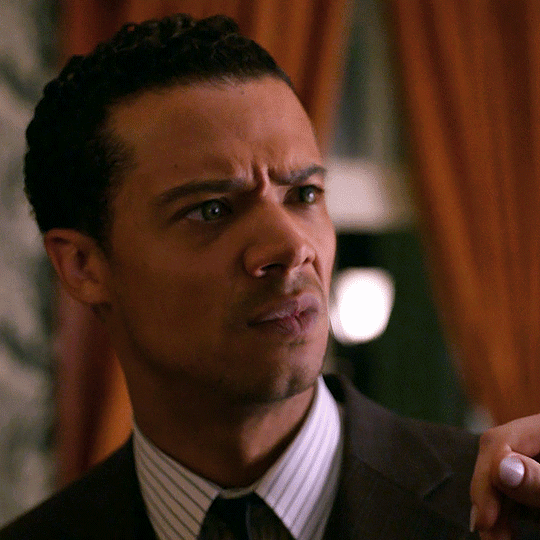
Lestat stays wearing his wedding ring, y'all!





The whole reason Lestat is even going on tour with Satan's Night Out is to redirect all negative attention & threats away from Mr. I Own The Night du Lac--Lestat saving Louis' life all over again.

Fake personality, fake face. Who is the REAL Lestat, behind the smoke & mirrors? ("Who are you, Louis?")


Cycles keep cycling!

Go as fun & campy as y'all want, Rolin--so long as y'all keep it GOTHIC and keep it HORROR. Take us to The Witches Place!

"Evil of my evil!" 😭

These vampires have a capacity for enduring--have FUN; and make the most of it; "I'm just getting started~!"

"Clipping of pianoforte, from Italian pianoforte, from piano (“soft”) + forte (“strong”). So named because it could produce a wide range of varied volumes note-by-note, in contrast to older keyboard instruments...." (Wiktionary)

"In classical music, it is customary to describe the tempo of a piece by one or more words, most commonly in Italian, in addition to or instead of a metronome mark in beats per minute. Italian is typically used because it was the language of most composers during the time these descriptions became commonplace in the Western musical lexicon.[6] Some well-known Italian tempo indications include "Allegro" (English "Cheerful"), "Andante" ("Walking-pace") and "Presto" ("Quickly"). This practice developed during the 17th and 18th centuries, the baroque and classical periods." (Wikipedia on Tempo)
Lestat's French Revolution lookin arse. 🙄😂 But I'm surprised by this--he sees Louis as his forte/strength and allegro/cheerful (my happiness/mon bonheur); while he self-depreciates as piano/soft and andante/moderate (but perhaps also more menacing/dramatic).

"Come to me.... You little wh*re~!" 🎶💜

Lestat is feeling JILTED, oof.


Louis & Claudia packed their bags and left your arse to rot in a dump in NOLA--then Lou left his arse in Paris--then Lou left him in a hurricane in NOLA again--oh yeah, Les is biiiiiiiitteeeerrrrr~! XD




🌈🏳️🌈🦄

Y'all heard Bi-con Lestat the last time!


In more ways than one! 🦇🩸🍆
THANK YOU, AMC, for being absolutely feral!
#the vampire lestat#lestat de lioncourt#music#interview with the vampire#loustat#iwtv tvc metas#music videos#this is so petty and so perfect
40 notes
·
View notes
Text

Succotash is a culinary dish consisting primarily of sweet corn with lima beans or other shell beans. Other ingredients may be added including corned beef, potatoes, turnips, salt pork, tomatoes, multi-colored sweet peppers, and okra. Because of the relatively inexpensive and more readily available ingredients, the dish was popular during the Great Depression in the United States. It was sometimes cooked in a casserole form, often with a light pie crust on top as in a traditional pot pie. Succotash is a dish with a long history. The stew was introduced to the colonists in the 17th century by indigenous Americans. Composed of ingredients unknown in Europe at the time, it gradually became a standard meal in the cuisine of New England and is a traditional dish of many Thanksgiving celebrations in the region, as well as in Pennsylvania and other states. src.: https://www.dictionary.com/browse/succotash, Bowles, Ella Shannon (1947). Secrets of New England Cooking. Barrows, https://www.nytimes.com/2015/08/19/dining/yes-succotash-has-a-luxurious-side.html, https://newengland.com/yankee-magazine/food/succotash-recipe-with-a-history/, Morgan, Diane and John Rizzo. The Thanksgiving Table: Recipes and Ideas to Create Your Own Holiday Tradition. Pg. 122 photo ref.: https://foodmeanderings.com/corn-succotash-gluten-free/
18 notes
·
View notes
Text
—𝐂𝐀𝐏𝐓𝐀𝐈𝐍 𝐇𝐄𝐍𝐑𝐘 𝐀𝐕𝐄𝐑𝐘.


>>Come all you brave Boys, whose Courage is bold, Will you venture with me, I'll glut you with Gold? Make haste unto Corona, a Ship you will find, That's called the Fancy, will pleasure your mind.Captain Every is in her, and calls her his own; He will box her about, Boys, before he has done: French, Spaniard and Portuguese, the Heathen likewise, He has made a War with them until that he dies.
—A Copy of Verses, Composed by Captain Henry Every, Lately Gone to Sea to seek his Fortune.
Known among his peers as “the King of Pirates”, the fierce Henry Avery was an infamous pirate from the 17th century, specially known for always having escaped alive with his loot. His short-lived career, beginning with the mutiny of the ship he worked in, the Charles II (which he would rename Fancy), was so prolific it inspired many to turn to piracy, and the captain himself was regarded by the public as some romantic figure that fought against injustice. His sudden disappearance in the summer of 1696, while carrying his vast treasure with him, sparked a decade-long hunt for his crew and himself. Adrian Van Broeck, a Dutchman who claimed to have been a survivor of Avery’s many prisoners, would publish in 1709 a pamphlet on the times of his captor, who he presented as both a ruthless, treacherous buccaneer and a passionate lover; he claimed that, after sacking emperor Mughal’s fleet in 1695, Avery took the emperor’s daughter as his wife and, alongside her, founded a pirate utopia that would become a monarchy on its own right. Truth is, Henry Avery was known to have been married at least once, to an Englishwoman by the name of Dorothy Arther, though they had no known offspring; as for his fate, many testimonies state that he was robbed of his fortune while on the run and died a pauper.
Legend or myth, this pirate’s legacy paved the way for many other legendary pirates, and left an indelible mark on literature. His personal sigil —a Jolly Roger with a bandana in a black background—, always waving proud at the top of his Fancy, would drive away in fright all the ships who knew the name of captain Henry Avery.
Almost thirty years after his mysterious disappearance, Daniel Defoe, author of Robinson Crusoe, would write of him in his General History of the Pyrates, that “None of these bold Adventurers were ever so much talked of, for a while, as Avery”
11 notes
·
View notes
Text
Writing Notes: The Baroque Period

The Baroque Period of music - occurred from roughly 1600 to 1750.
It was preceded by the Renaissance era and followed by the Classical era.
The Baroque period was a revolutionary time in music history that saw a full embrace of polyphony, ornamentation, and harmonic sophistication.
The style spread throughout Europe over the course of the 17th century, with notable Baroque composers emerging in Germany, Italy, France, and England.
The era was not limited to music. Baroque painting (by masters like Caravaggio and Peter Paul Rubens), Baroque sculpture (led by Gian Lorenzo Bernini), and Baroque architecture (particularly in the Catholic church) were other celebrated forms of Baroque art in the 17th and 18th centuries.
The term Baroque can refer to all of these art forms in addition to music.
Characteristics of Baroque Music
Baroque music made notable advances from the Renaissance period, many of which are still employed by contemporary musicians and composers. Baroque music often has the following characteristics:
Emphasis on dynamics: During the Baroque era, the pianoforte (an early version of the piano) replaced the harpsichord as the primary keyboard instrument. The pianoforte (called a klavier in German) struck strings with felted hammers, whereas the harpsichord plucked the strings. This meant the pianoforte could play both soft and loud, opening new dynamic possibilities. Other new Baroque instruments, like the valve trumpet and the violin, also had immense dynamic potential. Renaissance instruments like the lute were still played, but they were eclipsed in popularity by newer, more dynamic options.
Embrace of instrumental music: Prior to the Baroque era, a great amount of music was vocal music used in liturgical settings. While Baroque composers still embraced singing in the form of chorales, cantatas, and opera, instrumental music became increasingly popular. Some of the most renowned pieces of Baroque music, such as Vivaldi's Four Seasons or Bach's Brandenburg Concerto, are instrumental pieces.
Ornamentation: Much like Baroque architecture and sculpture, Baroque music embraces flair. Even the simplest melodies were often embellished with ornamentations like trills, acciaccaturas, appoggiaturas, mordents, and turns.
Basso continuo: Basso continuo notation became popular during the Baroque era. This form of music notation includes a complete bass line, which is usually played by a cello in a Baroque ensemble. A player of a keyboard instrument like a harpsichord or piano then improvises chords using figured bass notation. Solo organ players often play basso continuo notation entirely on their own.
A Brief History of Baroque Music
After its inception in Italy, Baroque music expanded throughout Europe thanks to composers like Johann Sebastian Bach and George Frideric Handel.
Origin in Italy: The early Baroque era of music centered in Italy. Italian composers based in Rome and its surroundings composed music that drew on the traditions of the Renaissance era but also expanded its harmonic and ornamental boundaries. Notable Italian Baroque composers include Alessandro Scarlatti (and his son Domenico Scarlatti), Antonio Corelli, and Claudio Monteverdi. Antonio Vivaldi was the last major Italian Baroque composer. He worked in the later Baroque era, overlapping with George Frideric Handel and Johann Sebastian Bach.
German influence: As musicians traveled throughout Europe, the Baroque style caught on, and new composers added new elements. The English composer Henry Purcell and French composers like Jean-Baptiste Lully and Jean-Phillippe Rameau made marks, but it was the German school of Baroque music that was most influential. Georg Philipp Telemann, Michael Praetorius, Johann Pachelbel, and most of all Johann Sebastian Bach helped define the high Baroque period. Another prominent German was George Frideric Handel, although he spent nearly his entire career in England.
End of an era: The Baroque period's end is tied to the death of Bach in 1750. The second half of the eighteenth century and early nineteenth century marked the Classical period, where composers like Wolfgang Amadeus Mozart and Franz Joseph Haydn built on the foundation laid by Baroque composers.
Baroque Period Musical Forms
Popular Baroque musical forms include the prelude and fugue, the cantata, the concerto, the oratorio, the sonata, and even opera.
Like prior Renaissance compositions, many Baroque pieces have religious themes.
Baroque composers were aligned with both the Catholic church and, following the 16th century Protestant Reformation, other denominations like Lutheranism.
Notable Baroque Composers
The Baroque era gave rise to many composers whose works are still regularly played. Three particularly notable composers of the Baroque period are:
Johann Sebastian Bach: No composer better defines the High Baroque era than J.S. Bach. Based largely in Leipzig, Germany, Bach was a master organ player (among many other instrumental talents) and a composer who created both liturgical and secular music. Bach's brilliance lay in his mastery of counterpoint and harmonic transformation. Works like The Well-Tempered Klavier, The Art of the Fugue, and the Brandenburg Concertos remain essential parts of the classical music repertoire.
George Frideric Handel: Born in Germany but notably a Londoner, Handel composed Baroque landmarks like Water Music and the opera Rodrigo. Yet he is most remembered for Messiah, an English-language oratorio composed in 1742. His Music for the Royal Fireworks was commissioned by King George II and firmly established his place in British music history.
Antonio Vivaldi: A Venetian composer, Vivaldi was famed for his mastery of the violin. His musical compositions reflect his instrumental virtuosity. The most famous of these is Four Seasons, a series of violin concertos that is widely performed by today's classical musicians. During his lifetime, Vivaldi made most of his income as an opera composer, where he pushed thematic boundaries in works like 1716's Arsilda, regina di Ponto.
Source ⚜ More: Notes & References ⚜ Writing Resources PDFs
#requested#baroque#writing notes#music#writeblr#history#worldbuilding#writing inspiration#writing reference#writing ideas#literature#writers on tumblr#dark academia#spilled ink#writing prompt#creative writing#writing resources
65 notes
·
View notes
Text
My next post in support of Ukraine is:
A little different because Twitter was knocked out earlier this evening. I thought I had lost my entire Ukraine thread, which I started on day 1 of the full-scale invasion. I would have been absolutely LIVID if it was gone. So I posted on Blue Sky first, and when I went back to Twitter, everything was back, so my thread is still there. I'm soooo relieved. But anyway, today's post is:
While Twitter was down, I posted this evening's post on Blue Sky first, so doing it a bit backwards but in this evening's post, we're visiting the Ukrainian city of Trostianets (Тростянечь). Dating from the 17th century, the name comes from the Trostyanka River. It grew in population when Cossacks and peasants migrated there after suffering a defeat at the Battle of Berestechko in 1651. That was part of the Khmelnytsky Uprising. The city was captured by muscovy forces on March 1, 2022, and was occupied until March 26, 2022, when it was liberated by Ukrainian forces. Several buildings were destroyed by muscovy, including a house that Tchaikovsky stayed at in 1864 while composing the The Storm. They also mined a local hospital. There was also evidence of executions and tortures.
#StandWithUkraine
#СлаваУкраїні 🇺🇦🌻

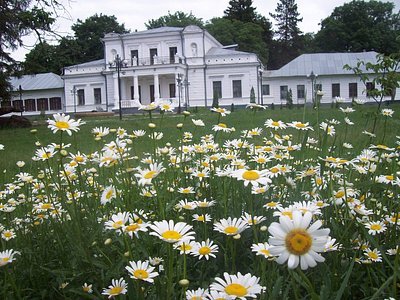



Adding that Trostianets is in Sumy Oblast. Apologies that I left that out. I do like to include what Oblast we're visiting. #СлаваУкраїні 🇺🇦🌻
82 notes
·
View notes